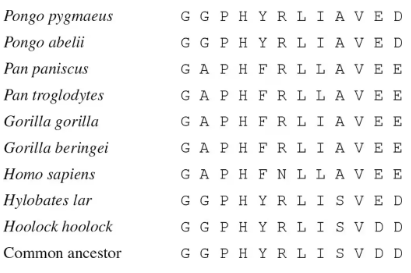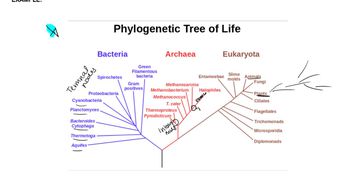A 9-bp deletion in the mitochondrial genome between the gene for cytochrome oxidase subunit II and the gene for tRNAᴸʸˢ is a common polymorphism among Polynesians and also in a population of Taiwanese natives. The frequency of the polymorphism varies between populations: The highest frequency is seen in the Maoris of New Zealand (98%), lower levels are seen in eastern Polynesia (80%) and western Polynesia (89%), and the lowest level is seen in the Taiwanese population. What do these frequencies tell us about the settlement of the Pacific by the ancestors of the present-day Polynesians?
Table of contents
- 1. Introduction to Genetics51m
- 2. Mendel's Laws of Inheritance3h 37m
- 3. Extensions to Mendelian Inheritance2h 41m
- 4. Genetic Mapping and Linkage2h 28m
- 5. Genetics of Bacteria and Viruses1h 21m
- 6. Chromosomal Variation1h 48m
- 7. DNA and Chromosome Structure56m
- 8. DNA Replication1h 10m
- 9. Mitosis and Meiosis1h 34m
- 10. Transcription1h 0m
- 11. Translation58m
- 12. Gene Regulation in Prokaryotes1h 19m
- 13. Gene Regulation in Eukaryotes44m
- 14. Genetic Control of Development44m
- 15. Genomes and Genomics1h 50m
- 16. Transposable Elements47m
- 17. Mutation, Repair, and Recombination1h 6m
- 18. Molecular Genetic Tools19m
- 19. Cancer Genetics29m
- 20. Quantitative Genetics1h 26m
- 21. Population Genetics50m
- 22. Evolutionary Genetics29m
22. Evolutionary Genetics
Phylogenetic Trees
Problem 21
Textbook Question
Using the following amino acid sequences obtained from different species of apes, construct a phylogenetic tree of the apes.

 Verified step by step guidance
Verified step by step guidance1
Start by aligning the amino acid sequences from the different species of apes. Use a sequence alignment tool (e.g., ClustalW or MUSCLE) to identify conserved regions and differences among the sequences.
Calculate the pairwise sequence differences or similarities between each pair of species. This can be done by counting the number of mismatched amino acids in the aligned sequences.
Convert the pairwise differences into a distance matrix. The distance matrix will represent the evolutionary distances between the species based on their amino acid sequence differences.
Use the distance matrix to construct the phylogenetic tree. Apply a tree-building algorithm such as the Neighbor-Joining method or UPGMA (Unweighted Pair Group Method with Arithmetic Mean) to infer the relationships among the species.
Visualize the phylogenetic tree. Label the branches with the species names and ensure the branch lengths reflect the evolutionary distances calculated from the distance matrix.
 Verified video answer for a similar problem:
Verified video answer for a similar problem:This video solution was recommended by our tutors as helpful for the problem above
Video duration:
4mPlay a video:
Was this helpful?
Key Concepts
Here are the essential concepts you must grasp in order to answer the question correctly.
Amino Acid Sequences
Amino acid sequences are the linear arrangements of amino acids in a protein, determined by the genetic code. These sequences can vary between species, reflecting evolutionary relationships. By comparing these sequences, scientists can infer how closely related different species are, which is essential for constructing phylogenetic trees.
Recommended video:
Guided course

Sequencing Difficulties
Phylogenetic Tree
A phylogenetic tree is a diagram that represents the evolutionary relationships among various biological species based on their genetic characteristics. The branches of the tree illustrate how species diverged from common ancestors over time. Constructing a phylogenetic tree involves analyzing genetic data, such as amino acid sequences, to determine the order and timing of evolutionary events.
Recommended video:
Guided course

Phylogenetic Trees
Molecular Phylogenetics
Molecular phylogenetics is the study of evolutionary relationships using molecular data, primarily DNA, RNA, and protein sequences. This approach allows for more precise insights into the evolutionary history of organisms compared to morphological data alone. By applying statistical methods to molecular data, researchers can construct and validate phylogenetic trees that depict the genetic divergence among species.
Recommended video:
Guided course

Phylogenetic Trees
Related Videos
Related Practice
Textbook Question
378
views


